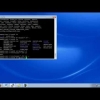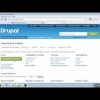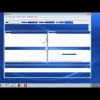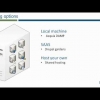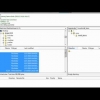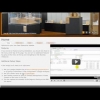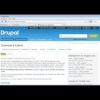
Videos
Installing Drupal 7 Using FTP
Installing drupal using FTP
There are many different way to install Drupal on a web server. In this tutorial, I'm going to show you how to install Drupal using FTP. The FTP method requires the least technical know-how, thus it's a good place to start if you're new to working with web servers. If you're comfortable working with servers from a command line, you might want to skip to the next tutorial: Installing Drupal with SSH and Drush.
Installing Drupal 7 on a Personal Computer
Installing Drupal on a Personal Computer
In this video I’m going to show you how to install Drupal on your local laptop or desktop computer.
Getting Started
Since personal computers are not web servers, the first thing we need to do is install a suitable web server stack on your PC. This will effectively turn your computer into a web server capable of running Drupal.
Essential Webmaster Tools
Essential Webmaster Tools
While building and deploying a website, there are several tools that you will need beyond a contact management system. There are various applications that you'll need to help you work with web servers, edit files and generally make your life easier. In this video, we're going to review some of the applications that you should keep in your webmaster toolkit. Each of the applications we're going to review in this video are open source and can be downloaded and installed for free on your computer.
Drupal 7 Installation Requirements and Options
drupal installation requirements and options
Drupal, like any software applications needs to be installed in a computer in order to run. You probably familiar from installing software from a desktop or laptop computer, however Drupal runs on a webserver. This is where the installation process is somewhat different. In this tutorial, we will review the requirements for installing Drupal and provide some hints to ensure your installation runs well. Webservers runs a set of services that put together to produce webpages.
Drupal 7 Overview
Welcome to the "Getting Started with Drupal" tutorial
Installing on Web Hosting
How to install Drupal and Open Enterprise on LAMP Web Hosting.
Introduction to Open Enterprise
Learn the basics about Open Enterprise with this video. Also take a lightning tour of some of the features.
- « first
- ‹ previous
- 1
- 2
- 3
- 4
